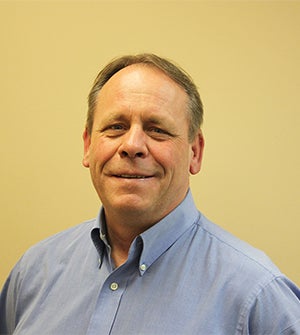City’s new civil, environmental engineer talks importance of water quality
Published 4:42 pm Wednesday, May 31, 2023
|
Getting your Trinity Audio player ready...
|
Albert Lea is known for its lakes, where people can fish, swim or boat. Lakes also contain pollutants, and that’s why some states have signs prohibiting swimming in certain lakes because of concerns.
And while that’s not the case here, John Ryther, the city’s new civil/environmental engineer, has some advice for dealing with pollutants, especially as they pertain to large bodies of water that can contain nitrogen and phosphorus, which cause dense plant growth. When those plants die, oxygen levels lower, and aquatic animals can die.
Sediment, including sand, dust, dirt or oil, also impact water quality.
“Any of that kind of thing gets into the water stream, and then the water quality goes down,” he said. “It’s bad for fish, any bottom-feeding aquatic life.”
Besides natural pollutants, pollutants can come from agricultural runoff, streets, pet waste and even the wind blowing things into the water. Ryther also noted any time there was precipitation any type of sediment would be mobilized, though he added that at some point everything would end up in the water when there was rain or snow.
While some pollutants weren’t harmful, he said others were harmful for recreational enjoyment, especially as it pertained to biodiversity.
But pollutants in water also impact the economy, especially because of the cost to treat contaminated water.
Dredging, typically done in 30- to 40-year intervals, is an expensive way to deal with the issue, and the final phase of the current dredging project was expected to cost $9 million.
Then there’s storm water.
According to Ryther, storm water was anything that came off the land following a rainfall, snow or any other weather event.
“The stuff that goes down the storm drains, the stuff that comes off your roof, runs down your driveway off the property,” he said. “Any precipitation that is mobile when it hits the ground.”
To help prevent pollutants from entering a storm system, Ryther suggested simple steps, including mulching lawn clippings and keeping storm drains cleared and cleaned out.
“Good care and maintenance of property, and good stewardship in general, helps keep all of that stuff from making its way downhill,” he said.
The Shell Rock River Watershed District also has a program for anyone interested in adopting a storm drain, and Ryther said that was the simplest way to prevent materials from entering the storm drain. Anyone interested should visit shellrock.org/projects (scroll down to Adopt a Drain!).
“We clean them as often as we can, but there’s over 2,000 storm drains in the city, and it’s hard to make sure that every one’s cleared out all the time,” he said.
He also encouraged people to clean up after their pets and to apply fertilizers only when needed and at appropriate rates.
“You want what you’re applying to be used by the plants and not become mobilized,” he said. “Anything in excess of what the plants can use doesn’t really benefit the plants, and it becomes a potential for runoff.”
Keeping leaves out of storm drains is also a good thing, as leaves contribute to excess phosphorus when they decompose.
According to the MPCA, anyone considering changes to a house or lot should consider reducing the size of hard, impermeable surfaces, though where those surfaces are necessary, they recommend considering pavers or pavement that allows water through.
Rain gardens, bowl-shaped gardens designed to collect runoff from downspouts or driveways, would also help. Rain barrels help, and — if applicable — consider a green (or vegetated) roof with a liner, insulation, drainage system, planting medium and drought-tolerant, low-maintenance plants. For more information on green roofs, visit https://stormwater.pca.state.mn.us/index.php/Green_roof_fact_sheet.
Ryther, who has a background in construction and agriculture, described his role as ensuring the city’s permits were in compliance with Minnesota Pollution Control Agency and state regulations, which included overseeing what happened at the wastewater treatment plant.
“Just generally water quality and environmental things in the city,” he said.
His work in farming and construction led him to face many environmental issues he saw daily.
“It all just had this really neat intersection in engineering, which has always been an interest of mine,” he said.




